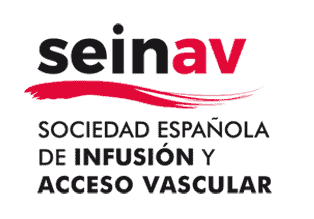VYVAEXPERTS25
Transforming Vascular Access in Oncology.
30 - 31 OCTOBER 2025
A meeting of experts for consensus and best practices
Transforming Vascular Access in Oncology.
This meeting will bring together national and international experts with the aim of sharing experiences, discussing the main current challenges and building consensus to help define the future of vascular access in oncology.
Designed in collaboration with SEINAV (Spanish Society of Infusion and Vascular Access), the conference will offer a high-level scientific programme, designed for those who wish to play an active part in the evolution of clinical practice and contribute to a more effective, safer and patient-centred model of care.
With the collaboration of:
How do you want to participate?
Bronze
Content available from 04/11/2025- Access to the recorded content from 4 November 2025,
- A recorded selection of the live presentations
- Access to the contents, from anywhere, 100% online.
Silver
Live streaming access- Live access to all sessions via streaming.
- Exclusive access to live workshops
- Simultaneous translation into English throughout the event.
- Access to the recordings to watch the sessions on the online platform.
- 100% online participation, from anywhere.
Gold
Classroom attendance- Live attendance to all sessions from the event venue.
- Pending official accreditation.
- Simultaneous translation into Spanish available in the room.
- Subsequent access to the recordings of the event from the online platform.
- Direct interaction with speakers and attendees.
- Delivery of the event bag with exclusive contents.
- Opportunity for face-to-face networking with national and international experts.
Programme of the conference
30 October 2025
Live programme
10:30 AM – 11:00 AM CET
Welcome and registration
11:00 am – 11:30 am CET
Introduction to the discussion and opening: The oncology patient and the importance of the vascular acces
This introductory session will address the complexity of the oncology patient, marked by immunological fragility and the frequent need for vascular access for treatments like chemotherapy and transfusions. It will discuss the high prevalence of complications, such as infections and thrombosis, and how vascular access has transformed the continuity and quality of oncology treatments. The essential role of specialized nursing in managing vascular access will also be highlighted, emphasizing the key competencies required for proper insertion, care, and maintenance of these devices.
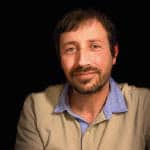
Xavier García
Infusion and Vascular Access Team Coordinator at Hospital Universitari de Girona Dr Josep Trueta
11:30 am – 11:45 am CET
Questions and Answers
The speakers will answer questions from the audience.
11:45 am – 12:05 Pm CET
Selection and management of central venous access devices in oncology patients:
CVADs have an essential role in oncology: they improve the quality of patient care, allow optimal efficacy of treatment, and enhance patients’ quality of life. Nevertheless, the choice of the most appropriate device, logistics of device insertion, and the proper timing of device removal are of vital relevance. Promoting inter-disciplinary cooperation, evidence-based protocols, and patient-centric care will aid healthcare teams to safely maximize the utilization of CVADs in oncology.
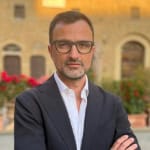
Dr. Fulvio Pinelli
MD – Anaesthesiologist and Intensivist, Member of GAVECELT and WOCOVA scientific Committees, VA Unit Director – Careggi University Hospital, Florence, Italy
12:05 PM – 12:15 PM CET
Questions and Answers
The speakers will answer questions from the audience.
12:15 pm – 12:35 pm
Transforming vascular access in oncology: the PICC-PORT revolution
This session will explore the impact of the PICC-PORT in oncology, highlighting its evolution as a hybrid device and its transformative role in vascular access. It will address the benefits for both patients—offering greater comfort, safety, and quality of life—and healthcare professionals, through improved efficiency and reduced complications. The talk will also examine the clinical criteria that support its position as a first-line choice, backed by international consensus, and reflect on future challenges and opportunities in its clinical, educational, and technological implementation.
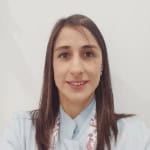
Olatz Fernández
Member of the VVAA team of the Oncology Day Hospital, Organización Sanitaria Integrada Donostialdea.
12:35 pm – 12:45 pm CET
Questions and Answers
The speakers will answer questions from the audience.
12:45 pm – 13:05 pm CET
Best practices for implantable port care and maintenance: Position of the GIVAF
This session will adress the GIFAV (French-speaking Interdisciplinary Group for Vascular Access) position for implanted port Care and maintenance in oncology, regarding to the latest publication.

Dr. Frédéric Gomas
MD Anesthesiologist, Chief of Vascular Access Unit, Gustave Roussy Hospital, Villejuif, France, President of the GIFAV
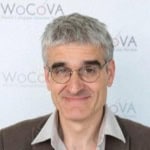
Christian Dupont
Coordinator Nurse, Cochin Hospital, Paris France, Member of GIFAV & Wocova scientific Committees
13:05 pm – 13:15 pm CET
Questions and Answers
The speakers will answer questions from the audience.
13:15 pm – 13:35 pm CET
Total parenteral nutrition in the oncology patient: challenges and solutions in vascular access
This paper will address the impact of total parenteral nutrition (TPN) in oncology patients, with a particular focus on vascular access. It will discuss how the prolonged need for vascular access to administer TPN influences the choice of device. Furthermore, it will highlight how proper management of these accesses improves the patient’s quality of life, and how a personalised approach to their management contributes to safer and more effective treatments.
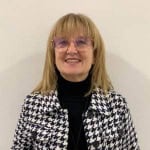
Maite Parejo
13:35 pm – 13:45 pm CET
Questions and Answers
The speakers will answer questions from the audience.
13:45 pm – 14:45 pm CET
Break – Lunch
14:45 pm – 15:05 pm CET
Safety Protocols in Infusion and Cytostatic Administration: Ensuring Best Practices for Patient and Healthcare Professional Protection and Effective Treatment
Safety is of paramount importance when applying cytotoxic substances. On the one hand, it is important to protect patients from serious skin damage caused by extravasation. On the other hand, cytotoxic substances are often hazardous medicinal products (HMPs) whose carcinogenic, mutagenic and reprotoxic properties require effective protection for healthcare professionals. The use of closed-system transfer devices plays a key role in this regard.

Matthias Hellberg-Naegele
Advanced Nurse Practitioner at HOCH Health Eastern Switzerland, Cantonal Hospital St. Gallen. Co-chair of the nursing working group of the German Society of Haematology and Oncology (DGHO). Board member and chair of the education working group of the European Oncology Nursing Society (EONS).
15:05 pm – 15:15 pm CET
Questions and Answers
The speakers will answer questions from the audience.
15:15 pm – 15:35 pm CET
Optimization of vascular access in oncology: The key role of tunneling
Tunnelling represents one of the major innovations in vascular access technique of insertion over the last few years, and it is for sure an important option that every VA specialist should know. In fact, tunnelling allows a safer exit site (for external catheter), reducing infection, thrombotic and dislodgment risks. Also, in patients with totally implantable devices (ports), tunnelling allows a safe and convenient port site in terms of both the comfort of the patient and of the operator involved in the administration of the therapy.

Dr. Fulvio Pinelli
MD – Anaesthesiologist and Intensivist, Member of GAVECELT and WOCOVA scientific Committees, VA Unit Director – Careggi University Hospital, Florence, Italy
15:35 pm – 15:45 pm CET
Questions and Answers
The speakers will answer questions from the audience.
15:45 pm – 16:05 pm CET
Humanization in Oncology: The Impact of Vascular Access
This session will address the challenges of vascular access in oncology patients, highlighting how humanization can reduce pain and anxiety, enhancing the patient’s experience. It will explore the social and cultural factors influencing device selection, emphasizing the importance of involving patients in the decision-making process. The session will also discuss the key role of specialized nursing in patient education and self-management of vascular access, aiming to prevent complications and improve the quality of life for oncology patients.
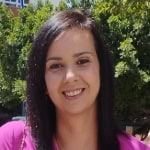
Laura Andújar
VVAA oncology team member at the Hospital de Torrecárdenas, Almería.
16:05 pm – 16:15 pm CET
Questions and Answers
The speakers will answer questions from the audience.
16:15 pm – 17:00 pm CET
The impact of intravenous therapy equipment on the oncology patient
With the participation of all the speakers from the day, this discussion will explore the impact of the intravenous therapy team on oncology patients, emphasizing their key role in improving treatment safety, effectiveness, and overall care quality. The session will address complication prevention, vascular access optimization, and the importance of a multidisciplinary approach to provide comprehensive and compassionate care in the oncology setting.
17:00 pm – 17:15 pm CET
Questions and Answers
The speakers will answer questions from the audience.
17:15 pm CET
Farewell
31 October 2025
Live programme
9:00 am CET
Welcome
09:00 am – 09:10 am CET
General intro

Linda Kelly
09:10 am – 09:30 am CET
PICC-port: How to prevent and avoid peroperative pitfalls
The session will adress differents tips and tricks in order to safely place a PICC-Port such as identifying potential vascular pathologies or anomalies and anatomical variations before the procedure. We will also address challenges related to venous puncture, including depth, diameter, and collapse, as well as the proximity to nerve and arterial structures.
Additionally, we will explore difficulties in catheter progression at the jugulo-subclavian-innominate junction and the confluence of the two brachiocephalic veins and the identification of false routes using the Bubble test.
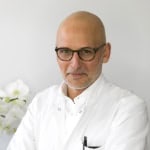
Dr. Pascal Fangio
MD, Anaesthesiologist, Chief of Vascular Access Unit, Hôpitaux du Léman, Thonon-les-Bains, France
09:30 am – 09:45 am CET
Questions and Answers
The speakers will answer questions from the audience.
09:45 am – 10:15 am CET
How to properly tunnelise my PICC: Key steps for an easy and safe application
This session will be a practical workshop on tunneling, where participants will have the opportunity to learn and practice this innovative technique in vascular access. Tunneling is essential to ensure a safe exit site for the external catheter, reducing the risks of infection, thrombosis, and dislodgement. During the workshop, practical aspects and best practices for performing effective tunneling will be addressed.

Dr. Fulvio Pinelli
MD – Anaesthesiologist and Intensivist, Member of GAVECELT and WOCOVA scientific Committees, VA Unit Director – Careggi University Hospital, Florence, Italy
10:15 am – 10:30 am CET
Questions and Answers
The speakers will answer questions from the audience.
10:30 am – 11:00 am CET
How to safely administer cytotoxic drugs
This session shows where there are weak points in administration and where a safety system offers protection

Matthias Hellberg-Naegele
Advanced Nurse Practitioner at HOCH Health Eastern Switzerland, Cantonal Hospital St. Gallen. Co-chair of the nursing working group of the German Society of Haematology and Oncology (DGHO). Board member and chair of the education working group of the European Oncology Nursing Society (EONS).
11:00 am – 11:15 am CET
Questions and Answers
The speakers will answer questions from the audience.
11:15 am – 11:45 am CET
Port access and maintenance: How to solve problems of patiency and challenging clinical solutions?
During this intervention, maintaining port patency, troubleshooting common issues, and implementing innovative clinical solutions will be adressed, based on real clinical challenges that are commonly faced. The workshop will mix handlings on implanted port access, case studies and interactive discussions.

Christian Dupont
Coordinator Nurse, Cochin Hospital, Paris France, Member of GIFAV & WocVA scientific Committees
11:45 am – 12:00 pm CET
Questions and Answers
The speakers will answer questions from the audience.
12:00 pm CET
Conclusions
Speakers

Xavier García
Infusion and Vascular Access Team Coordinator at Hospital Universitari de Girona Dr Josep Trueta

Dr. Fulvio Pinelli
MD – Anaesthesiologist and Intensivist, Member of GAVECELT and WOCOVA scientific Committees, VA Unit Director – Careggi University Hospital, Florence, Italy

Olatz Fernández
Member of the VVAA team of the Oncology Day Hospital, Organización Sanitaria Integrada Donostialdea.

Dr. Frédéric Gomas
MD Anesthesiologist, Chief of Vascular Access Unit, Gustave Roussy Hospital, Villejuif, France, President of the GIFAV

Christian Dupont
Coordinator Nurse, Cochin Hospital, Paris France, Member of GIFAV & Wocova scientific Committees

Maite Parejo

Matthias Hellberg-Naegele
Advanced Nurse Practitioner at HOCH Health Eastern Switzerland, Cantonal Hospital St. Gallen. Co-chair of the nursing working group of the German Society of Haematology and Oncology (DGHO). Board member and chair of the education working group of the European Oncology Nursing Society (EONS).

Laura Andújar
VVAA oncology team member at the Hospital de Torrecárdenas, Almería.

Dr. Pascal Fangio
MD, Anaesthesiologist, Chief of Vascular Access Unit, Hôpitaux du Léman, Thonon-les-Bains, France


